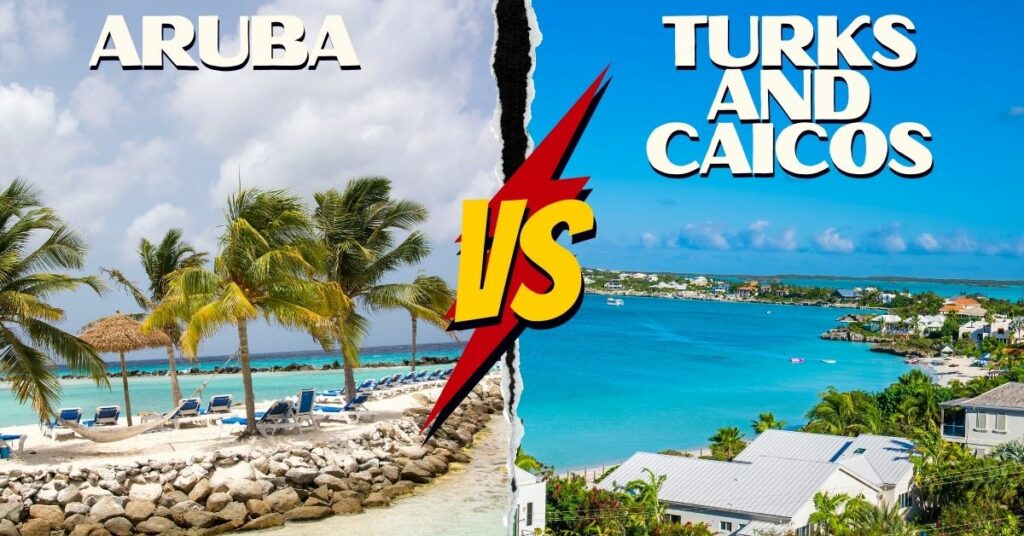As a frequent visitor to Aruba, I’ve always been enamored by the crystal clear waters and pristine beaches that make it one of the most popular Caribbean destinations. However, in recent years, concerns about the presence of Sargassum seaweed have raised questions about whether or not this paradise has been affected.
As someone who loves soaking up the sun on Aruba’s sandy shores, I wanted to investigate if Sargassum is indeed present and how it’s impacting tourism.
Sargassum is a type of brown seaweed that originates in the Sargasso Sea, located in the North Atlantic Ocean. It can travel vast distances due to ocean currents and winds, with some species reaching as far as South America and Africa.
In recent years, there has been an increase in Sargassum blooms in various parts of the Caribbean region, causing concern for both environmentalists and tourists alike. With this context in mind, I set out to determine if Aruba has also been affected by these blooms and what measures are being taken to address them.
Understanding Sargassum and Its Impact on Caribbean Beaches
Discover how this seaweed invasion is wreaking havoc on the stunning Caribbean coastlines. Sargassum, a type of brown algae that floats in large mats on the ocean surface, has been washing up on beaches across the region for several years now.
While it may not be harmful to humans, sargassum can cause significant damage to marine ecosystems and local economies. The excessive amount of sargassum can block sunlight from reaching underwater plants and corals, leading to their death. It can also deprive fish and other sea creatures of oxygen by depleting the water’s dissolved oxygen levels.
Furthermore, tourism-dependent countries like those in the Caribbean have seen a decline in visitor numbers due to sargassum-covered beaches. As we move onto discussing whether there is sargassum present in Aruba, it’s important to note just how problematic this issue has become for many coastal communities.
The Presence of Sargassum in Aruba
You’ll be surprised to know that despite being located outside the Sargasso Sea, Aruba has been affected by the influx of seaweed in the Caribbean region. The island’s pristine beaches and crystal-clear waters have not been spared from this phenomenon, which has caused concern among locals and tourists alike.
The presence of sargassum in Aruba has led to a decrease in beachgoers and a negative impact on tourism. However, measures have been taken to address this issue and maintain the island’s reputation as a top tourist destination.
Measures Taken by Aruba to Address Sargassum
Are you curious about what steps Aruba has taken to combat the influx of seaweed and maintain its reputation as a top tourist destination? Well, let me tell you that Aruba has implemented several measures to address the issue of sargassum.
One of the most effective methods is through beach cleanups, which are conducted regularly by local authorities and volunteers. These cleanups not only remove the seaweed from the beaches but also prevent it from accumulating in large quantities offshore.
In addition to beach cleanups, Aruba has also invested in technology to monitor and predict sargassum blooms. This allows them to take proactive measures such as deploying barriers or nets to prevent the seaweed from reaching shore. Furthermore, hotels and resorts have implemented their own measures such as installing floating barriers around their beaches or using machinery to remove sargassum from their shores.
With these efforts combined, visitors can still enjoy Aruba’s pristine beaches even during sargassum season. As a result of these initiatives, tourists can rest assured that they will still be able to enjoy their vacation in Aruba despite the presence of sargassum.
However, there are some tips that visitors should keep in mind during this time such as checking with their hotel or resort for updates on beach conditions and avoiding swimming in areas with large amounts of seaweed. By following these guidelines, visitors can help preserve Aruba’s beautiful coastline while still enjoying all that this island paradise has to offer.
Tips for Visitors to Aruba During Sargassum Season
If you’re planning a trip to the Caribbean and want to make the most out of your vacation, then it’s important to know how to navigate and enjoy the beaches during sargassum season.
Firstly, check with your hotel or resort if they have any measures in place for cleaning up the seaweed on their beachfront. Some hotels hire extra staff during sargassum season to ensure their guests can still enjoy a clean and pristine beach experience. Alternatively, some resorts may offer free shuttles to nearby beaches that are not affected by sargassum.
Secondly, if you do decide to visit a beach affected by sargassum, be sure to bring appropriate footwear such as water shoes or flip flops as the seaweed can make walking barefoot uncomfortable. It’s also important to stay hydrated and bring plenty of sunscreen as the sun reflecting off the seaweed can intensify UV rays.
By being prepared and informed about sargassum season in Aruba, visitors can still enjoy all that this beautiful island has to offer even during periods of increased seaweed activity.
As we conclude our discussion on sargassum in Aruba, it’s important to note that while measures are being taken by local communities and businesses alike, there’s still much work that needs to be done in addressing this issue on a larger scale. As climate change continues to affect ocean currents and temperatures, it’s likely that we’ll see more frequent occurrences of sargassum blooms in the future. However, through continued research and collaboration between governments and scientists worldwide, there remains hope for finding innovative solutions towards managing this natural phenomenon.
Conclusion and Future Outlook
As I conclude this discussion, it’s important to emphasize the significance of sustainable tourism in Aruba.
The island’s economy heavily relies on its tourism industry, and thus, maintaining a balance between economic growth and environmental conservation is crucial for its long-term success.
Continued research and innovation are also necessary to address emerging issues like sargassum influx and ensure that Aruba remains a top tourist destination while preserving its natural resources.
Importance of Sustainable Tourism
You can be the key to preserving our beautiful island by choosing sustainable tourism practices that will ensure its longevity for generations to come. Sustainable tourism involves a commitment to minimizing negative impacts on the environment, supporting local communities, and promoting cultural understanding.
By choosing eco-friendly accommodations, participating in responsible tour activities, and reducing waste during your stay, you can help preserve Aruba’s natural beauty and promote its sustainability. Sustainable tourism is not only good for the environment and local communities; it also benefits visitors by providing unique cultural experiences and opportunities for adventure.
Aruba offers a variety of sustainable activities such as hiking through Arikok National Park, snorkeling in pristine waters, and learning about local history at museums. By choosing these types of activities over more harmful ones like jet skiing or visiting animal attractions that exploit animals, you are contributing positively to the future of Aruba’s tourism industry.
Continued research and innovation in sustainable tourism practices will further enhance the visitor experience while protecting our precious resources.
Need for Continued Research and Innovation
We must invest in ongoing research and innovation for sustainable tourism to ensure the preservation of our planet’s natural beauty and cultural diversity. As travelers become more environmentally conscious, it’s crucial that we adapt to meet their expectations.
This means developing new technologies and practices that reduce our carbon footprint, protect wildlife habitats, and promote local economies. One example of such innovation is the use of renewable energy sources in hotels and resorts. By switching to solar or wind power, these establishments can significantly decrease their greenhouse gas emissions while also saving money on utility bills.
Another promising area of research is the development of eco-friendly transportation options for tourists, such as electric buses or bicycles. These initiatives not only benefit the environment but also provide unique experiences for visitors who want to explore their surroundings in a sustainable way.
Ultimately, by investing in ongoing research and innovation for sustainable tourism, we can create a better future for both travelers and the planet they love to explore. In conclusion, sustainable tourism has become increasingly important as people recognize the need to preserve our natural resources for future generations. To keep up with this demand, we must continue researching innovative solutions that support environmental conservation while also promoting economic growth in local communities.
By doing so, we can ensure that travelers have access to authentic cultural experiences without sacrificing sustainability standards. The path ahead may be challenging at times, but investing in research and innovation will ultimately lead us towards a brighter future where travel enhances rather than harms our world’s natural beauty and cultural diversity.
Conclusion
Well, that’s it folks! I hope this article has been informative and helpful in understanding the impact of Sargassum on Aruba’s beaches. As we’ve seen, Aruba isn’t immune to the presence of Sargassum, but the island has taken proactive measures to address it and ensure its visitors can still enjoy its beautiful beaches.
One interesting statistic to note is that, according to a study by the University of South Florida, the amount of Sargassum in the Caribbean has increased by 500% since 2011. This is a concerning trend that highlights the importance of continued efforts to address this issue.
If you’re planning a trip to Aruba during Sargassum season, remember to check with your hotel or resort for updates on beach conditions. And if you do encounter Sargassum on the beach, be sure to dispose of it properly and avoid disturbing any wildlife that may be using it as habitat.
With these precautions in mind, you can still have an enjoyable and memorable vacation in paradise!

Meet Michael Graham, the main author of SeekTraveler.com. With a wanderlust that knows no bounds, Michael has traversed more than 30 countries across the globe. From sun-soaked Caribbean islands to the ancient marvels of Europe and the captivating charm of Japan, he has witnessed the wonders of diverse cultures firsthand. Michael’s in-depth knowledge and contagious enthusiasm for travel will inspire you to pack your bags and embark on your own extraordinary journey.


